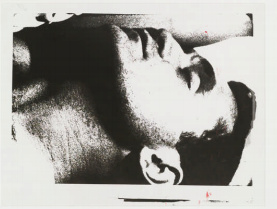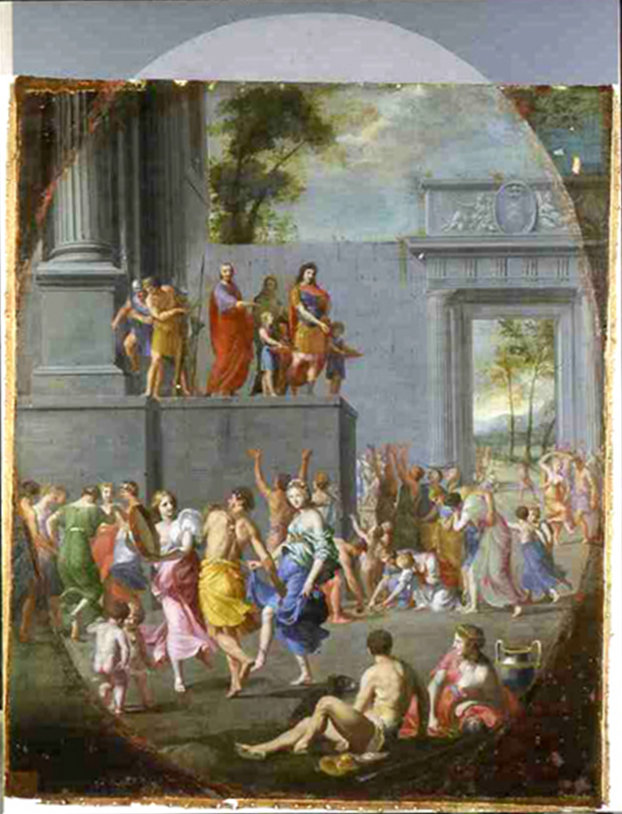
I have decades of curating and collections management experience at major museums across North America, including six years as Curator of European & American Art at the National Gallery of Canada.
I enjoy all aspects of museum and archival work that bring me closer to the artifacts and the public.
Click on the items below for details.

As Curator of European and American Art at the National Gallery of Canada (Ottawa) from 2005 to 2011, I was ultimately responsible for the care of all pre-1980 non-Canadian paintings, sculptures and decorative arts. In a time of massive upheaval — with 70 layoffs in the space of 5 years — I managed a staff of 3-5 permanent employees, plus graduate student interns. I was responsible for budgeting, loans, acquisitions, exhibitions, research, cataloging, public inquiries, outreach, tours, lectures, labels and publications. I conceived and supervised the reinstallation of 20 collections galleries, in addition to many temporary exhibitions. I implemented a nationwide program for the restitution of Nazi loot. I worked extensively in the department of Prints and Drawings, and I maintained relations with many stakeholders including staff, interns, volunteers, donors and visitors.
The three succeeding sections detail some of my curatorial work at the NGC and elsewhere. For exhibition design, see the DESIGN selection on the main menu.
A crucial part of curating is the acquisition of art through purchase or donation. What follows is a sampling of the many justifications I wrote for the acquisition of works for the National Gallery of Canada. Familiarity with all aspects of the acquisition process — appraisal, conservation, transport, display, credit and didactics — has been of benefit in my curating and my ongoing consulting work. One of my specialties is facilitating the sale or donation of art and artifacts to publicly available collections.
Click on an item below to read the justification in PDF format.
![tomb-of-general-brock[1]](https://grahamlarkin.files.wordpress.com/2013/08/tomb-of-general-brock1.jpg?w=1122&h=171)
Thomas Cole’s Tomb of General Brock, Queenston Heights. Justification for the acquisition of an 1830 painting for the National Gallery of Canada. In this effort to purchase it in time for the War of 1812 bicentenary I note that — as with West‘s celebrated Death of Wolfe — this is “a Canadian subject painted in England by an American émigré … perfect for the collection of European and American art in the National Gallery of Canada.” Here‘s the handbook entry/label I wrote for the work, and here‘s the announcement in the NCG magazine.

G.F. Watts’ Time, Death and Judgement. Justification for the acquisition of preparatory studies (already purchased at auction) for a painting donated by the artist to the NGC in 1887.

The Ptarmigan Vase: A Monumental Copper, Silver and Gold Mokume Vase, ca. 1900-05. These 24 pages of research were assembled in a matter of days in January 2011 in preparation for a successful auction bid for an amazing piece of Canadian-themed exotica designed by the former head jeweler at Tiffany’s. In a strange twist of fate, a twin to this seemingly-unique work emerged a year later.

Andy Warhol’s Sleep. Justification for the 2010 acquisition of a unique 1965 screenprint donated to the National Gallery. This is a stunning poster-sized work, with a Warhol print on one side and an anonymous, Rauschenburg-style print on the other.
I have extensive cataloging experience, beginning in earnest with a year of cataloging prints and drawings at the Canadian Centre for Architecture (Montreal), where I entered data into a 30-field database using the Getty’s ATT structured vocabulary.
My Harvard doctoral dissertation—The Elusive Ouevre of Jacques Callot—is a study of the origins of the catalogue raisonné in 17th- and 18th-century Europe, when an oeuvre really meant the printed works of an author or artist. While at Harvard I cataloged drawings in the Harvard University Art Museums, and I wrote catalogue entries for the exhibition French Prints from the Age of the Musketeers at the Boston MFA.
I wrote numerous catalogue entries and justufucations for acquisition during my years as Curator of European & American Art at the National Gallery of Canada.

I was recently charged with the photography, cataloging and distribution of surplus holdings from the National Emergency Strategic Stockpile (NESS) at the Public Health Agency of Canada (PHAC). The artifacts in question were more than 1,000 different cold war emergency medical supplies —effectively a hospital-in-a-box. The surplus artifacts were later distributed to eligible small museums across the country. As part of that work I wrote a history of the early decades of NESS operations. Its publication is currently on hold at the request of PHAC, who are overwhelmed with stockpile inquiries due to the COVID-19 pandemic.

I’m currently working in various capacities at Curatorial, Inc. in Pasadena, California. Curatorial provides art services at every step, from artwork creation and display to shipping, logistics, storage, collections management, and curated exhibition programming. One of their most remarkable services is providing museums, art, cultural and educational institutions with affordable, top quality, rentable traveling exhibition programming.
![Voice-of-Fire[1]](https://grahamlarkin.files.wordpress.com/2013/08/voice-of-fire1-e1377370288619.jpg?w=1122&h=115)
I’ve written a lot of labels over the years, starting with wall text for the Ottawa venue of Egyptomania in 1994. The document at this link contains my extended labels for some mostly modern paintings and sculptures in the European & American collection of the National Gallery of Canada. The artists include Thomas Cole, Piet Mondrian, Edward Wadsworth, Jackson Pollock, Francis Bacon, Mark Rothko, James Rosenquist, Dan Flavin, Donald Judd, Andy Warhol, Joseph Kosuth, Carl Andre, and Barnett Newman.

In my role as Curator of European & American Art at the National Gallery of Canada, I installed a number of temporary exhibitions including Bernini and the Birth of Baroque Portrait Sculpture (2008). I have curated exhibitions at many libraries and museums elsewhere over the years, including a rare book exhibition at the Houghton Library (Harvard University) and an exhibition of Roman maps and city views at the Cantor Arts Center (Stanford University).
As the curator for the Marshall McLuhan DEW-Line Newsletter portion of the FEEDBACK exhibition (West den Haag, The Hague, Netherlands) in fall 2017 I produced in-house didactics including extensive video presentations. I also spoke at a related symposium. The exhibition travelled to Leipzig, Berlin, Paris and Karlsruhe.
See the DESIGN section of this site for a description of my gallery installation work.

I’ve always been intrigued by the material properties of artworks. As a graduate student at Harvard I co-hosted an international symposium on The Materiality of Print in Early Modern Europe. I also spent two years at Harvard’s Straus Center for Conservation and Technical Studies, where I was the research lead on a project to analyze and physically rebuild a damaged 17th-century painting that had taken pride of place in the château of Cardinal Richelieu (1585-1642).

In 2008 I was invited by ArtForum magazine to attend and review a Getty Center symposium on the challenges of preserving late modern and contemporary art. You can read my review here. At the time I was Curator of European & American Art at the National Gallery of Canada, a job that entailed extensive time in the conservation lab and galleries in the company of conservators.

In 2015 I teamed up with conservator Lizz Thrasher to form Small Museums Canada, a professional practice devoted to helping sustain Canada’s small museums, archives, historic sites and community groups. Our services include collections care, grant writing, exhibition services and the distribution of collections care supplies. Based on the results of our Canada-wide Health & Safety Survey for small museums and historic sites, we released an Artifact & Facilities Cleaning Guide to help staff deal with their basic maintenance needs.
Click on the buttons below for details.

One of the more notable Small Museums ventures was the preparation for the Canada-wide distribution of surplus artifacts from the National Emergency Strategic Stockpile, described in the CATALOGING section above.

At Small Museums Canada we’re consulting on a plan to implement a Centre for Textile History and Innovation, and to revive the local wool processing industry, at the Mississippi Valley Textile Museum, Almonte, ON. We are working with multiple stakeholders including the museum directorate, weavers, wool growers, loom manufacturers, educators and heritage professionals.
We found the perfect allies to the Small Museums Canada project in the authors of the remarkable 2016 book The Anarchist’s Guide to the Historic House Museum. Click on the buttons below for my review and author interview.




